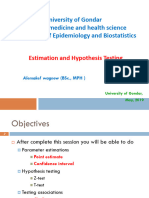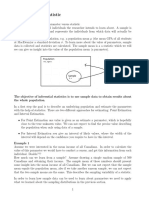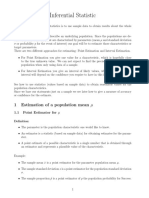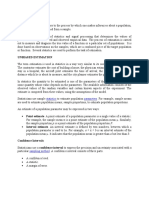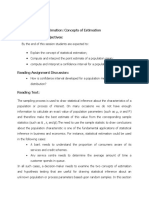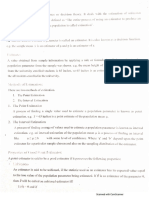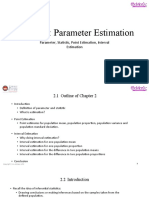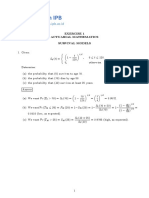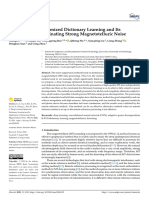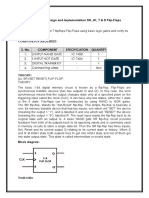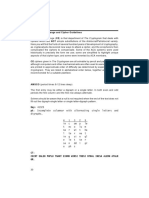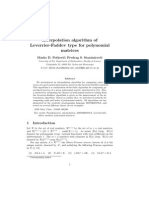0% found this document useful (0 votes)
24 views46 pagesOffiwiz File
The document discusses statistical estimation techniques including point and interval estimation. Point estimation aims to calculate a single value to estimate an unknown population parameter while interval estimation provides a range of values that are likely to contain the unknown parameter. Several qualities of good estimators such as unbiasedness, efficiency, consistency and sufficiency are also explained.
Uploaded by
emannesru246Copyright
© © All Rights Reserved
We take content rights seriously. If you suspect this is your content, claim it here.
Available Formats
Download as PDF, TXT or read online on Scribd
0% found this document useful (0 votes)
24 views46 pagesOffiwiz File
The document discusses statistical estimation techniques including point and interval estimation. Point estimation aims to calculate a single value to estimate an unknown population parameter while interval estimation provides a range of values that are likely to contain the unknown parameter. Several qualities of good estimators such as unbiasedness, efficiency, consistency and sufficiency are also explained.
Uploaded by
emannesru246Copyright
© © All Rights Reserved
We take content rights seriously. If you suspect this is your content, claim it here.
Available Formats
Download as PDF, TXT or read online on Scribd
/ 46
